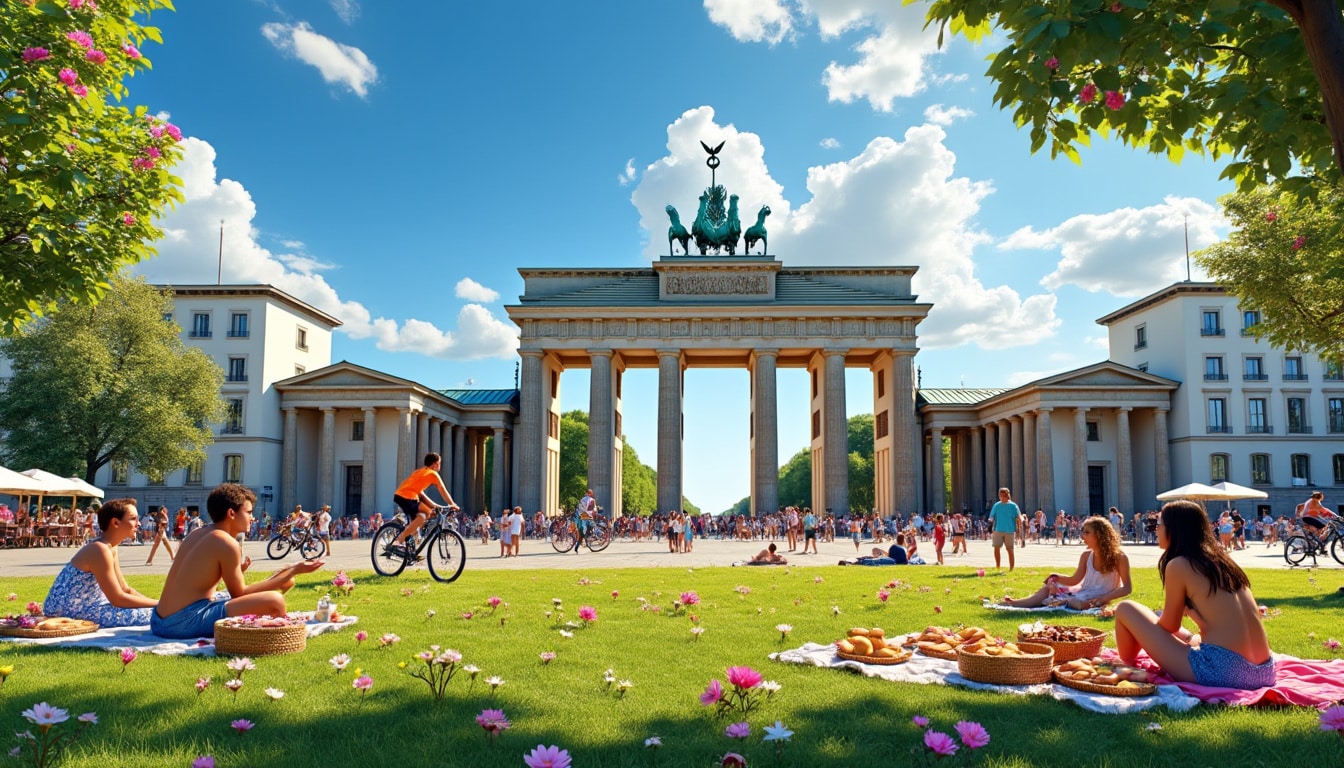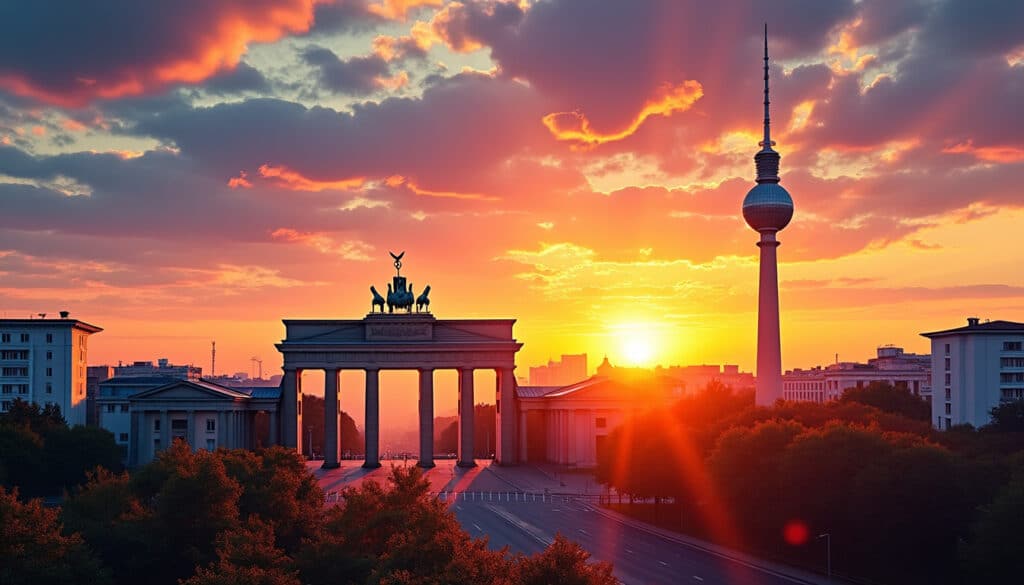Berlin, the vibrant capital of Germany, is no stranger to fluctuating weather patterns. As summer approaches, it transforms into a bustling hub where residents and tourists alike bask in the warmth of the season. With its distinct urban culture and lively atmosphere, Berlin offers a unique experience during the hot months, although the heat can sometimes be challenging. The city provides a plethora of activities and tips to manage the warmth efficiently.
Understanding Berlin’s Summer Climate
Berlin’s summer climate is notably influenced by its moderately continental position, which results in warm, humid summers. The city’s geographical placement in the north-east of Germany at 52 degrees north latitude exposes it to both cold and warm air masses. Thus, weather and temperature fluctuations are common and can be quite unpredictable.
Typically, during the summer months of June, July, and August, daytime temperatures hover around 25 °C (77 °F), with occasional heat waves pushing it up to 35 °C (95 °F) 🌡️. These high temperatures are partly due to the urban heat island effect, where the city atmosphere retains heat more than its surrounding rural areas. The highest recorded temperature was set in late June 2019, reaching 38.4 °C (101.1 °F).
Despite the heat, the evenings can be surprisingly cool, providing a refreshing break from the daytime warmth. However, Berlin’s residents are no strangers to the occasional bouts of Atlantic depressions, which bring cool and rainy days even in the heart of summer. As a result, the average summer temperature varies between years, with some summers being warmer and sunnier than others.
| Month 🌞 | Average Min Temp (°C) 🌙 | Average Max Temp (°C) ☀️ | Precipitation (mm) 🌧️ |
|---|---|---|---|
| June | 11.7 | 22.9 | 60 |
| July | 14 | 25 | 70 |
| August | 13.5 | 24.8 | 50 |
The summer sun in Berlin can be relentless, which emphasizes the importance of carrying sunscreen to protect the skin from harmful UV rays. Hats and sunglasses also become essential fashion statements and practical accessories against the sun.

Adapting to the Heat: Practical Tips
During the warmer months, Berliners and tourists can be seen flocking to the numerous water bodies within the city. The Spree River and the many lakes offer fantastic retreats to cool off. Engaging in water activities not only provides a refreshing break but also offers stunning views of Berlin’s scenery.
- 🥽 Pack light clothing and a swimwear for quick dips in lakes and rivers.
- 🏖️ Keep essential beach accessories such as towels and flip-flops handy.
- ❄️ Cooling towels can be a game-changer on particularly warm days.
The city’s many parks, such as Tiergarten and Tempelhofer Feld, transform into lively picnic spots. Here, people enjoy outdoor games and events, equipped with their trusted picnic baskets and outdoor gear. Essential beverages like water and refreshing drinks help in staying hydrated during these excursions.
Managing the Urban Heat
The urban heat island effect in Berlin contributes significantly to the overall feeling of warmth in the city. This phenomenon occurs when natural landscapes are replaced with concrete and asphalt, which absorb and retain heat more effectively, causing city temperatures to rise by about one or two degrees Celsius compared to surrounding areas.
The urban heat is most palpable during the night when the retained heat keeps temperatures up. This effect becomes a double-edged sword; while it allows for nighttime festivals and events without the bite of cold, it can also lead to uncomfortable nights for residents without adequate cooling solutions in their homes.
To mitigate the implications of urban heat, several measures have been adopted:
- 💨 Use of fans and other cooling devices in residential and commercial spaces.
- 🌳 Implementation of green roofs and increased urban landscaping to promote evaporative cooling.
- 🚴 Encouraging the use of bicycles and public transport to reduce vehicle emissions.
| Solution 🌿 | Benefit 🌍 |
|---|---|
| Green roofs | Improves air quality and reduces heat absorption |
| Increased vegetation | Provides natural cooling and shade |
Individuals are encouraged to engage in sustainable practices, which not only alleviate personal discomfort but also contribute to reducing the collective urban heat effect. Making use of cooling towels and maintaining proper hydration are simple yet effective measures in managing day-to-day warmth.
Events and Activities to Enjoy in the Sun
The sunny weather in Berlin invites a slew of outdoor festivals and events that celebrate the city’s dynamic culture. From music festivals to open-air cinemas, the city is alive with activities designed to be enjoyed in the warm embrace of summer.
- 🎶 Berlin’s famous open-air concerts and music festivals are a must. Keep your sunscreen handy and enjoy the vibrant scenes.
- 🎨 Visit Berlin’s numerous outdoor art installations and street fairs. Creativity often bursts into life against the backdrop of sunny skies.
- 📽️ Enjoy films under the stars. The city’s many open-air cinemas provide the perfect setting for a relaxed evening out.
Berlin’s culinary scene also flourishes in the summer, with numerous food festivals and street markets. Here, visitors can indulge in refreshing treats like ice cream and exotic beverages that provide a much-needed respite from the heat.
Preparing for a Warm Visit
Whether visiting Berlin for a short trip or an extended stay, preparation is key to making the most out of the summer experience. Understanding the weather patterns and knowing the essentials to pack can transform your visit from ordinary to extraordinary.
Here are some tips to help navigate Berlin during the hot months:
- 👜 Pack versatile clothing, including swimwear for unexpected trips to the beach or lakes.
- 🌞 Ensure you have a hat, sunscreen, and sunglasses to protect against harsh midday sun.
- 🏖️ Portable beach accessories like a mat or a large towel can come in handy.
- 🔋 Carry a power bank to keep your gadgets charged during long outdoor excursions.
The best time to visit is from mid-May to late September, as the weather tends to be more predictable and favorable for outdoor activities. During this period, the city offers longer days, with about 7 to 8 hours of sunshine per day, providing ample daylight to explore.
FAQs
- Q: What should I wear for Berlin’s summer? 🌞
- A: Lightweight, breathable fabrics, hats, sunglasses, and a light jacket for cooler evenings are recommended.
- Q: Are there any cooling stations in Berlin for public use? 💧
- A: Yes, many public parks provide shaded areas and some have misting stations available during peak summer heat.
- Q: How can I stay hydrated during my visit? 🚰
- A: Carry a refillable water bottle and take advantage of public drinking fountains scattered throughout the city.
Berlin in the summer offers a unique blend of cultural experiences and urban adventures, making it an ideal destination for those seeking to enjoy vibrant city life amid hot weather. With the right preparation and an open itinerary, visitors can fully embrace the warmth and energy that characterize Berlin’s sunnier days.🌞

Navigating the climate in Berlin involves understanding its unique variations across the seasons. The city, known for its cultural vibrancy and historical significance, experiences a maritime temperate climate that influences both residents and tourists. Whether you’re strolling the streets of…
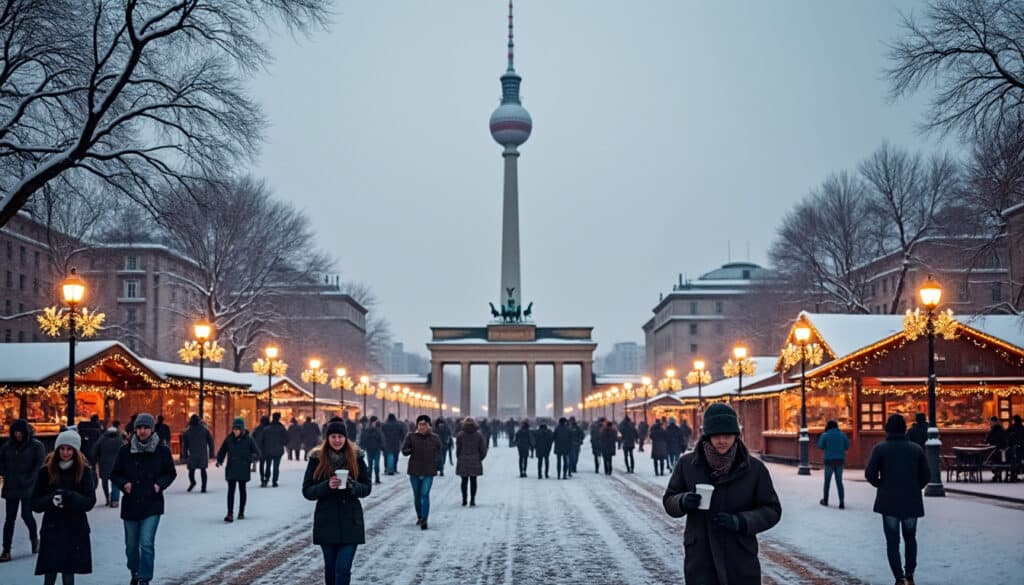
As winter descends upon Berlin, the city’s vibrant streets transform into a mystical canvas painted with frosty hues. Locals and visitors alike brace for the biting chill, exploring unique ways to embrace the city’s cold climate. From cozy cafés to…

Flooding and natural risks in Berlin
The vibrant city of Berlin, known for its rich history and dynamic urban culture, faces its share of natural challenges, particularly flooding. With its intricate network of rivers and canals, Berlin’s flood risks have increasingly become a focal point for…

Berlin, a vibrant city teeming with history, culture, and a unique urban lifestyle, also presents a unique climate dynamic characterized by varying humidity levels throughout the year. For anyone interested in exploring the German capital, understanding the city’s atmospheric nuances…

Is Berlin warm throughout the year?
Berlin, the bustling capital of Germany, is a city rich in history, culture, and diverse climate patterns. As a key player in the cultural and political landscape of Europe, understanding Berlin’s weather throughout the year is crucial for both residents…

Rain and precipitation in Berlin
Berlin, well-known for its rich historical and cultural heritage, is also characterized by its distinct climate patterns. The city receives an average of 591 mm of rainfall annually, making rain and precipitation a significant aspect of life here. This article…
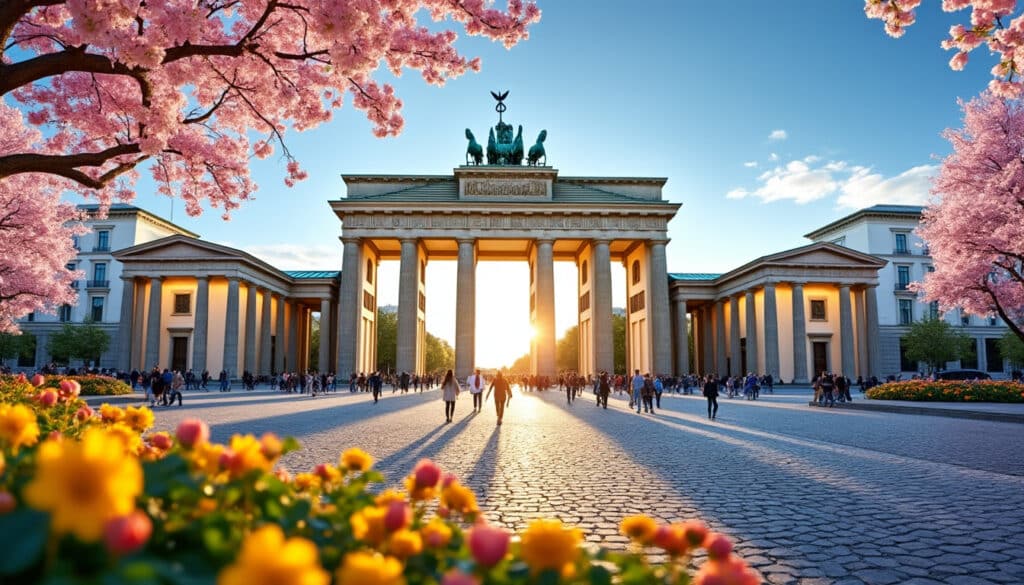
Berlin, Germany’s vibrant capital, experiences a fascinating array of seasonal changes throughout the year. Each season brings its unique charm to this bustling metropolis, making Berlin a captivating destination no matter the time of year. From the Winter Wonderland of…
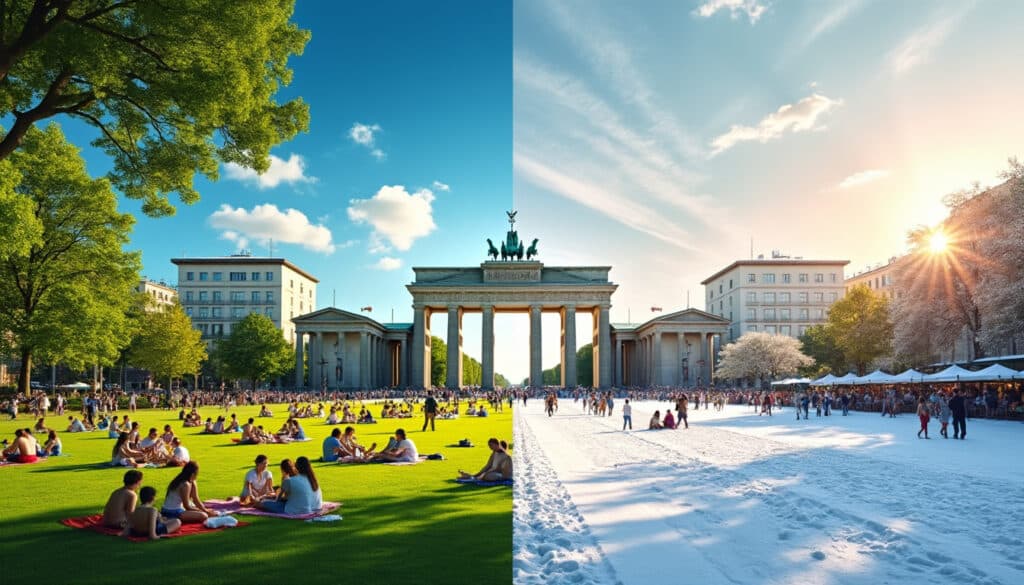
The city of Berlin, capital of Germany, boasts a rich tapestry of culture and history, but many might not realize the weather here is just as compelling. Situated at a latitude of approximately 52 degrees north, Berlin experiences a moderately…
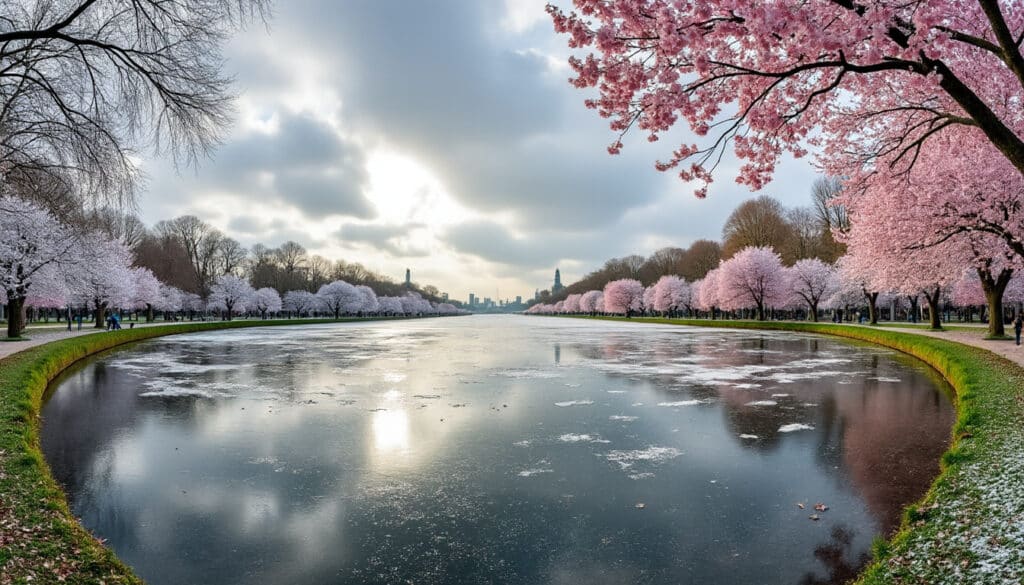
Berlin, with its vibrant culture and rich history, attracts millions of tourists each year. A key factor to consider when planning your visit is the weather, which shifts dramatically from month to month. This article provides an in-depth look at…

What is the weather like in Berlin?
Berlin, the vibrant capital of Germany, is known not only for its rich history and dynamic cultural scene but also for its unique weather patterns that can vastly vary throughout the year. Whether you’re a resident soaking in the Berlin…

